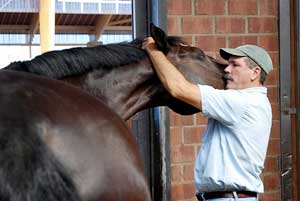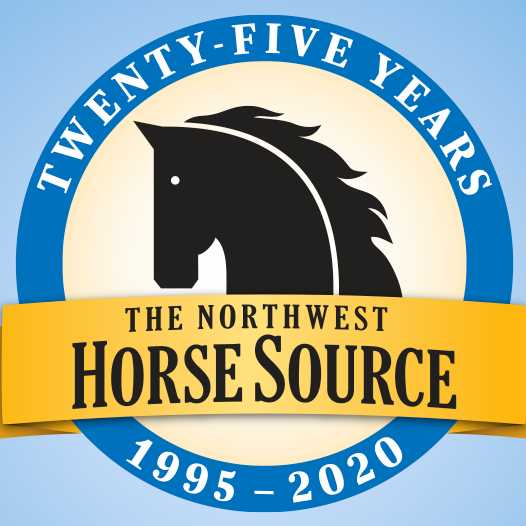Are You Listening to What Your Horse’s Body is Telling You?
When discussing head-shy horses, often the first question that is asked is whether it is a behavioral issue or a physical issue? If a behavior is unreasonably difficult to train out of the horse, or is consistent, or keeps coming back, then you might consider the possibility that it is a discomfort or pain issue.
In our experience, 95% of head-shy horses have excessive pain and tension in the poll. Usually by the time it reaches the point of head-shyness, it’s extreme. There are things you can do to help the horse release this tension, but you also want to determine what’s creating it in the first place so that you can prevent it from returning.
There’s a long list of possible causes for physical discomfort or pain in your horse’s poll. The most obvious would be a trauma from an outside source; for example, rearing and hitting the head in the trailer or on a beam. Other possibilities might be ear-twitching, or hard-tying a horse that pulls back. By the time the horse learns that pulling back isn’t going to work, the damage is already done – especially if the horse is strong-willed or panics. This doesn’t necessarily mean that it’s permanent and can’t be undone, but tension in this area doesn’t easily let go on its own. In fact the horse does a lot better job of covering it up than letting it go.
There’s also the likelihood that pain in the poll is being created by physical issues elsewhere in the body. Virtually any discomfort will affect the poll. Most commonly, pain in the poll – especially in working horses – often develops due to soreness in a front foot or lower leg; generally on the same side as the sore foot. So, bottom line, if your horse is head-shy there’s a good chance that it might be a physical discomfort, and not a training issue.

Simple Masterson Method® bodywork techniques can help to release this discomfort. The Bladder Meridian, and Lateral Cervical Flexion Techniques are easy to use, and can both be found at www.mastersonmethod.com/training-videos. The Bladder Meridian Technique bypasses the horse’s survival-defense response and connects directly with that part of the horse’s nervous system that releases tension. The Lateral Cervical Flexion Technique also releases tension and restores movement to the poll and atlas. Releasing tension in this area can be one of the most rewarding things you can do for your horse.
Horses do things for a reason, and it pays for the owner or trainer to understand what that reason might be. Whether it’s a subtle difference in movement or something that’s creating a training challenge, by paying attention to what your horse’s body is telling you, you may be able to avoid training and physical issues with your horse.
About the Masterson Method® of Integrated Equine Performance Bodywork™: The Masterson Method is an integrated, multi-modality method of equine massage. It is a unique, interactive method of equine massage in which you learn to recognize and use the responses of the horse to your touch to find and release accumulated tension in key junctions of the body that most affect performance. In contrast to most traditional modalities, it enables the horse to actively participate in the process of releasing tension. It is something you do with the horse, rather than to the horse. This participation and interaction is what makes the method fascinating for those who use it. In fact, if you do not allow the horse to participate, it does not work!
To find out more about the Masterson Method® techniques, books and seminars leading to certification go to: www.MastersonMethod.com

News from the horse industry. Sharing today’s information as it happens. The Northwest Horse Source is not responsible for the content of 3rd party submissions.





